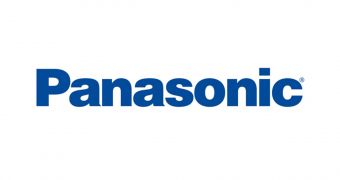Panasonic Corporation, formerly known as Matsushita Electric Industrial is Japan’s biggest private employer that’s traded publicly on the stock exchange. The company was hard hit with huge losses recently and now it’s working hard on getting back to profitability.
The company was founded in 1918 and it is currently the largest electronics manufacturer in Japan along with other well-known industry giants like Toshiba, Sony and Canon.
Panasonic is also an expert in battery, solar panel and semiconductor technologies, as it’s ranked as the 20th largest semiconductor manufacturer in the world with a 1.1% global market share.
The company currently employs more than 330,000 workers globally, but it has pledged back in 2011 that it would reduce its overseas workforce by about 40,000 jobs.
Panasonic has also announced that it would halve its headquarters headcount cutting or relocating about 7,000 jobs.
After posing a huge, almost unheard of $10 billion loss late last year, the company realized that it was hard hit by the Japanese energy crisis that followed the great tsunami, and also by low TV sales.
The thing is that while other divisions like avionics and battery are doing fine, the TV division is currently in tough position.
Like we’ve already said, Panasonic is a huge company with various divisions, and we must note that all batteries used in Toyota’s Prius hybrid are made by Panasonic, while Boeing and Airbus are traditional clients for Panasonic’s avionics division.
The TV division, on the other hand, is suffering from the decreasing global TV sales and the questionable popularity of its plasma products.
Panasonic announced back in 2006 that it would no longer manufacture classic analog TV sets and would, instead, concentrate on digital LCD TVs.
The problem is that Panasonic bought many of Pioneer’s plasma TV patents and has integrated those into its VIERA product line and is not concentrating on plasma TVs.
Panasonic has long been the strongest supporter of plasma TV technology and it’s the world greatest expert on the technology, as it is still concentrating on this technology for its large (greater than 40”) display products, while most other manufacturers are working with LCD and LED technologies.
Plasma TVs do offer considerable advantage over LCDs, but they have clear disadvantage such as higher price and higher power consumption. Until recently, they were ranging well above 300 watts, while similar LCDs were below the 100W mark.
Later technological advances have considerably reduced the power consumption while still being around double that of LCD TVs.
Image-wise, plasma TVs do offer clear advantages, but it’s difficult to fight in a tough market with a technology that’s more expensive and not really popular.
The company’s share prices have suffered a lot lately, and this year they reached the lowest level in 34 years, so it’s obvious why such a serious restructuring plan was put in motion.

 14 DAY TRIAL //
14 DAY TRIAL // 
